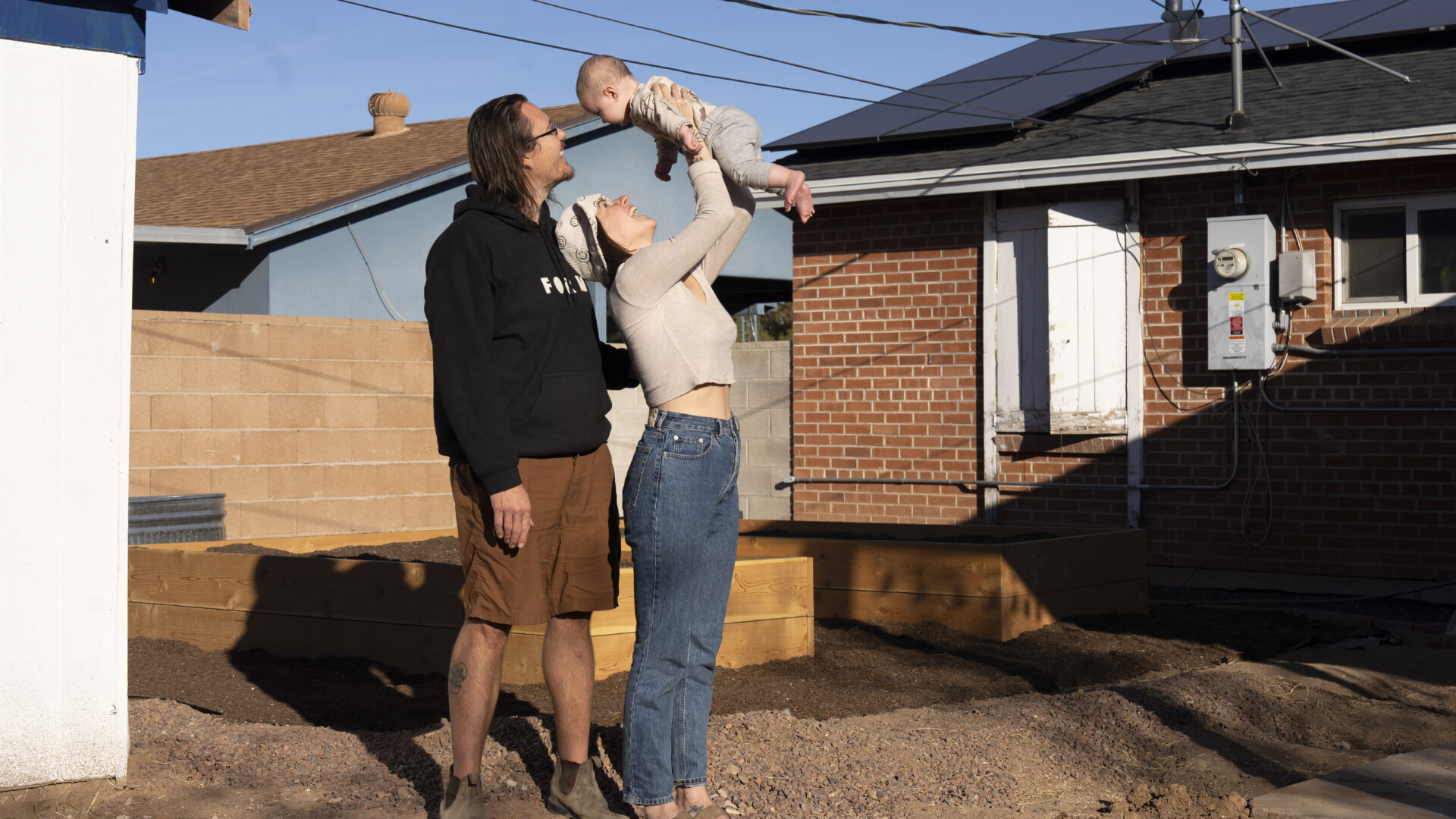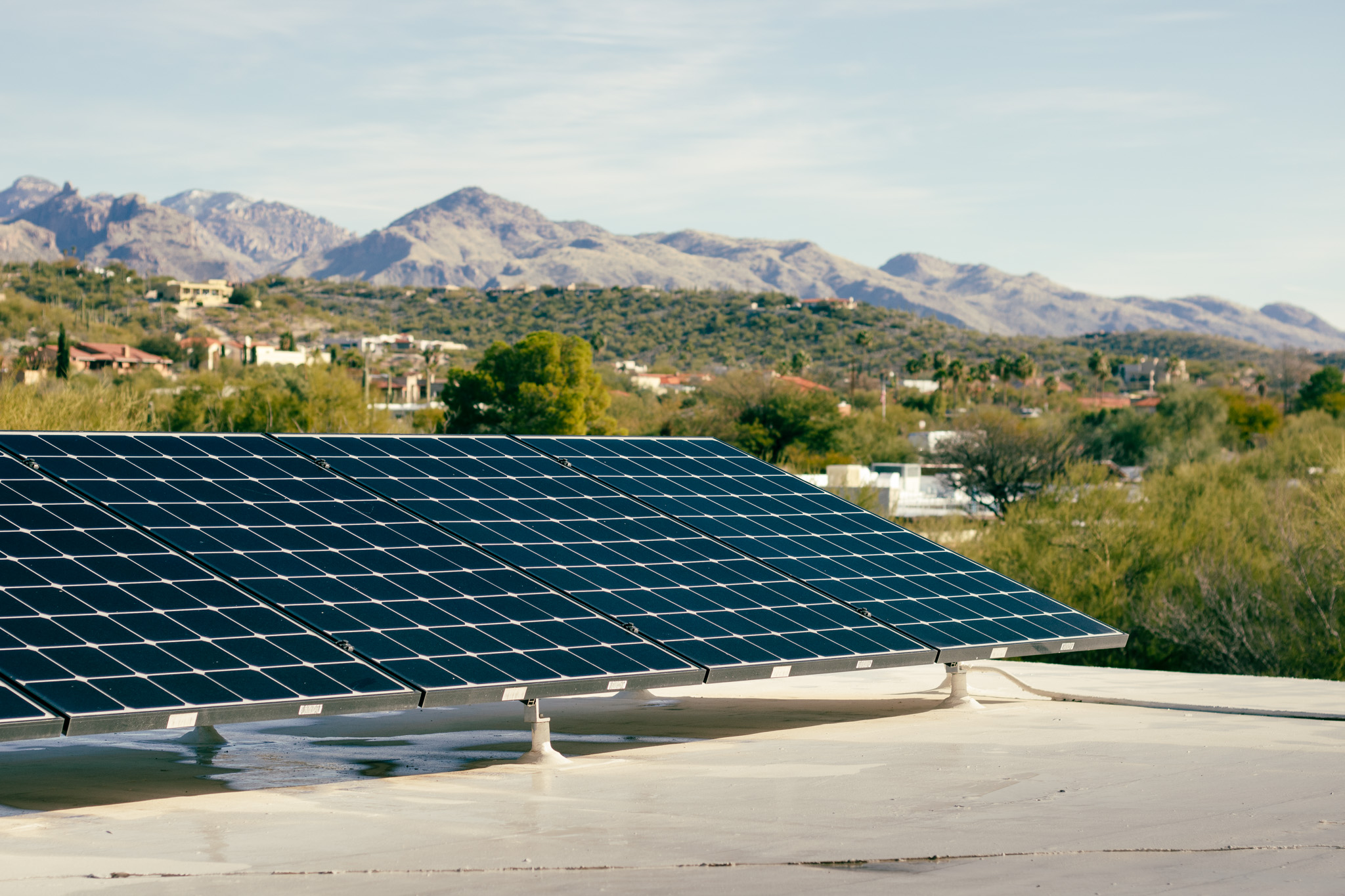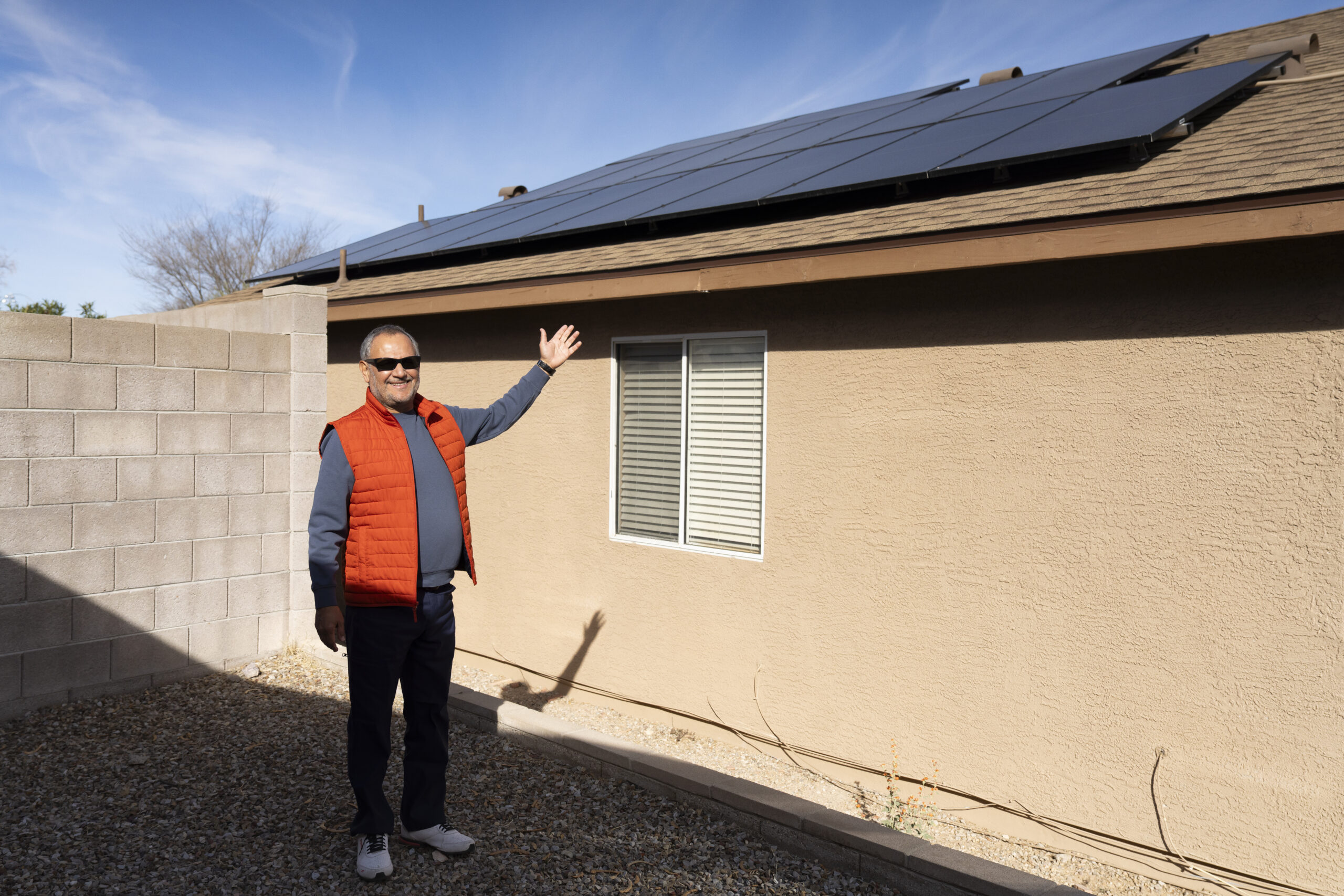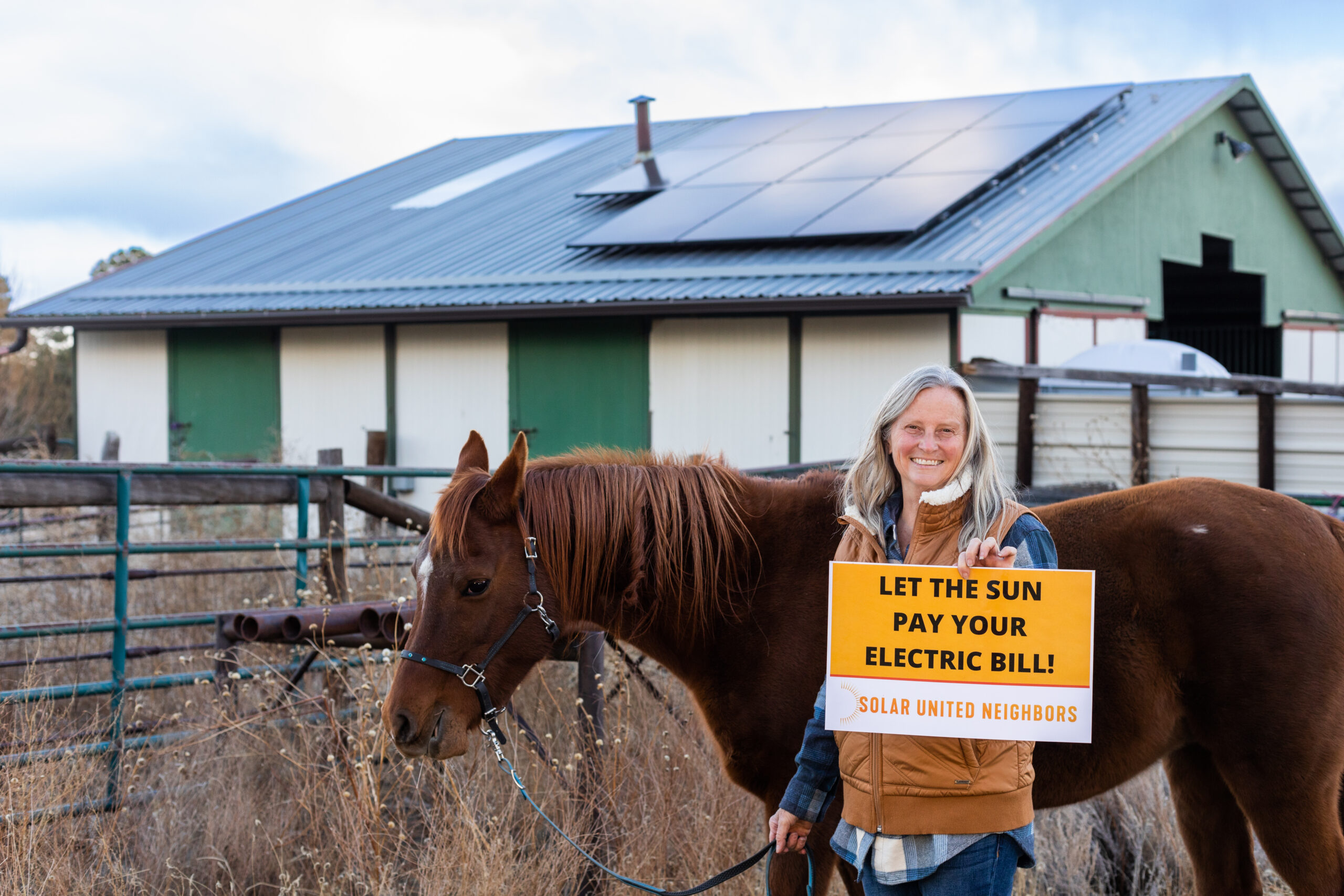Arizona’s solar industry faces a triple threat
- Solar accessibility

Arizona is the sunniest state in the country, but its rooftop solar industry is in crisis. Installations dropped by nearly 50% last year. Once-busy solar companies are closing their doors. And now, the Arizona Corporation Commission (ACC)—the state agency that regulates utilities and sets energy policies— is considering whether to slash what solar customers are paid for the energy they share with the grid, a move that could deal another devastating blow to the struggling industry.

This fall, the ACC will vote on whether to approve another 10% reduction in the solar export rate. If enacted, the change would lower the compensation received by new rooftop solar customers who send surplus electricity back to the grid. The proposed reduction would impact customers of Arizona’s three major monopoly utilities: Arizona Public Service (APS), Tucson Electric Power (TEP), and Unisource Energy Services (UNS).
The solar industry is already reeling from the rollback of the solar tax credits after 2025, market instability, and weak regulatory support in Arizona. Approving this cut now would send a damaging signal to homeowners and companies alike. This would further discourage investment in solar and slow Arizona’s transition to solar energy.
What is the solar export rate?
The solar export rate (also referred to as the ‘Rate Comparison Proxy’ or RCP) was created in 2016 as Arizona’s alternative to traditional net metering. It sets the value solar customers receive for each kilowatt hour of electricity they export to the grid. Customers are locked in at their current rate for 10 years at the time of installation, but that rate can drop by up to 10% each year — if the ACC approves the reduction.
While this step down is requested by the utilities annually, it isn’t automatic. Commissioners have discretion. In fact, they chose not to reduce the rate in 2020 due to economic hardship caused by the pandemic. We’re urging them to show that same leadership again this year.
Cutting compensation now would hit solar customers from all sides, at a time when many Arizona families are already struggling to keep up with rising electric bills. It’s a decision that could not come at a worse moment.

Arizona solar customers are facing a triple threat
Today, solar customers and those considering going solar are being squeezed by three simultaneous policy changes that are making renewable energy more expensive and less accessible. First, the annual solar export rate reductions mean that new solar customers are getting less value every year for the electricity they produce. This year’s proposed 10% cut would further shrink the incentive for homeowners to go solar in an uncertain financial landscape. On top of that, APS customers are being charged new monthly fees simply for having solar panels (what’s known as a ‘Grid Access Charge’). The ACC recently approved these additional charges for APS customers who install rooftop solar panels. These fees are likely to increase in future rate cases.
Finally, the 30% federal investment tax credit, which has helped make rooftop solar affordable for many households, will disappear in 2026. As state-level compensation declines, this disappearing federal incentive will leave families with fewer tools to help decrease the cost of solar. These changes create a hostile environment for solar adopters. Homeowners are seeing reduced payments for the energy they generate, new costs for maintaining their systems, and fewer financial support to help them make the switch in the first place.
“These overlapping policies are placing an unfair strain on solar families. They’re seeing shrinking returns for the energy they generate, new utility charges simply for having solar, and higher upfront costs as federal incentives disappear,” said Adrian Keller, Arizona Program Director for Solar United Neighbors. “These layered financial pressures are pushing solar further out of reach for Arizona families already grappling with rising electricity bills,” Keller said.
Why this matters right now
Arizona’s summers are hotter and more dangerous than ever. The summer of 2024 was the state’s hottest on record, and the number of extreme heat days continues to rise. These conditions place enormous strain on our electric grid and on household budgets. Families are paying more than ever for the power they need to stay safe and cool.
But rooftop solar and battery storage offer a solution.
They help reduce peak demand on the grid and increase local resilience when extreme weather threatens the power supply. Arizona has the potential to lead the nation in solar energy, but only if our regulators stop undermining that promise.
For younger residents, the growing number of barriers to solar is particularly disheartening. College student Noah Sosinky shared how solar has long been part of his vision for the future. “I grew up seeing solar panels on rooftops everywhere I went, which I knew took unique advantage of our state’s sunny climate. I’ve always planned to go solar once I buy my first home, so it’s incredibly frustrating to watch the Corporation Commission make that goal harder to reach with each yearly RCP rate step down,” said Sosinky. “It’s discouraging to see my generation being priced out of the solar opportunities that previous generations enjoyed. All Arizonans deserve the chance to benefit from our state’s abundant sunshine.”
The Commission can still do the right thing
The ACC has a choice. The 10% step down is not required. Commissioners chose to pause the reduction in 2020 during the pandemic. They can, and should, make that same choice today.
With Arizona’s solar industry in retreat and federal incentives set to disappear, regulators must not accelerate the decline. Maintaining the solar export rate this year would provide a measure of certainty and relief for families considering solar and for the companies serving them. Now is not the time to further cut solar compensation.

Take action
The ACC’s decision will affect thousands of current and future solar customers across Arizona, and your voice can make a difference. Submit a public comment to the Arizona Corporation Commission and urge them to vote against the 10% RCP reduction by August 13, 2025. We’ve created a simple toolkit to walk you through the process.
Arizona’s solar industry faces significant challenges, but there is a silver lining: APS just launched a program called ‘Solar Rewards’ that could help make up for some of the hits the industry has taken this year. If you are an APS customer with solar panels and a battery, this program will actually pay you for sharing your excess energy back to the grid.
Curious how much you could earn and whether your system qualifies? We’re hosting a free online session on August 28 at 6pm Arizona time to walk through everything we know.
Get the latest on solar straight to your inbox.
Fight for your solar rights.
Everyone has the right to go solar. Spread the sunshine nationwide and in your local community by taking action, joining events, and more.
